Ah, the age-old question when it comes to trading options, “What is a put in stock trading?”
Well, amigo, you’ve come to the right place to find your answer.
But before we dive into it, let’s review a bit of a background when it comes to trading options in the stock market.
Trading Options Basics
When it comes to trading in the stock market, there are a couple different routes you can take.
The first is to buy or sell stocks.
This is the most common and most widely recognized way of investing or trading in the stock market.
In order to do this, you just open up an account with your favorite online broker (like ours here), deposit your money and then you can buy or sell stock.
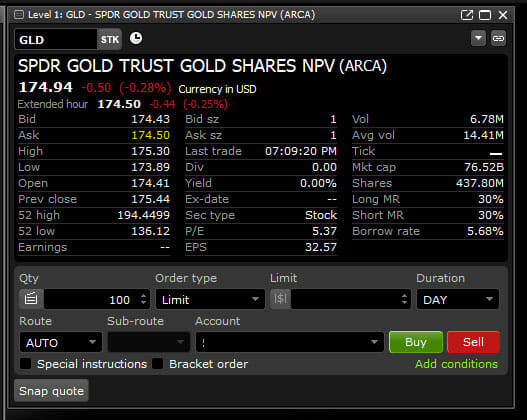
Typically when you do this, you’ll be opening a margin account which means that you don’t have to put up exactly the same amount of money – dollar for dollar – as the amount of stock that you want to buy.
This allows you to buy more stock than just the cash you put into the account can buy on its own.
So it’s adding a bit of leverage.
Now, each broker has it’s own level of leverage they’ll extend to you in a margin account – so make sure you check that out before you open the account.
The next route you can take it to trade options.
What is a Put in Stock Trading? The Extra Leverage You’ll Gain
Now the process of setting up an account is exactly the same as most brokers will let you buy options in a margin account.
Sometimes they might need you to deposit a little more money at the start in order to do that, but most brokers are pretty good about it.
Once you’ve got that squared away, you will be able to buy options!
This means, that you can basically rent stocks for a certain amount of time.
When you buy an option, you’re buying the right (but not the obligation) to buy the stock at a certain price for a certain amount of time.
This certain price is called the strike price and the certain amount of time is the amount of time between when the option is purchased and the expiration date.
If you look at the picture below, you can see the expiration date as well as the PUT side of the window and the Strike price.
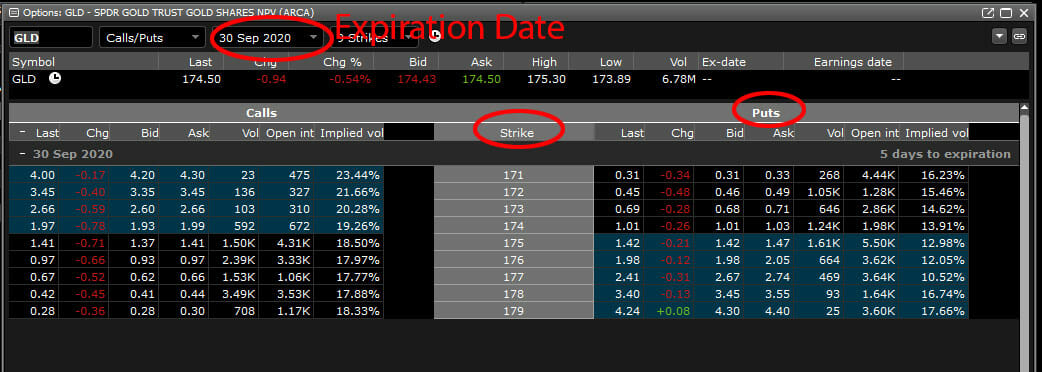
The strike price is the price that you think the option will expire above or below on the expiration date.
If you were to buy the September 30 calls at the 178 strike, you’d essentially be saying that you think the price of GLD would be at or above $178 on September 30.
And if the price of GLD was above $178 you’d be “in the money” and would make money.
On the other hand, (and to answer your question, “What is a put in stock trading?) a PUT is basically a bet that the price of a stock will be BELOW a certain value at a given date.
So, if you thought the price of GLD was going to be below $173 on September 30, you could buy the $173 PUTS.
Then if the price of GLD was below $173 on September 30, you’d be “in the money” and would make money.
But if the price of GLD was ABOVE $173 and you bought those puts, you’d lose all the money you used to buy those put options.
The same for the call side – if you bought the $178 calls and the price of GLD was BELOW $178 when the contracts expired on September 30, you’d lose as well.
In it’s simplest form, that’s how it works.
Now, you can also sell options but that’s more of an advanced strategy.
But for now, these are some of the basics.
How Much Do You Pay When Trading Options?
Now, one thing to keep in mind that the strike price is not the price that you pay for the options you are going to buy.
As mentioned before, the strike is the price you think the stock will be above or below on a certain date.
The price that you pay for an option is the same as when you buy stocks – you buy somewhere between the Bid price and the Ask price (called the Bid/Ask spread).
So, getting back to our example (see the same picture below), if you wanted to buy those 178 calls, the price would be somewhere between $0.41 (Bid) and $0.44 (Ask). Generally if you put your bid somewhere in the middle, your order will get filled.

On the other hand, if you’re thinking, “No way, GLD’s gonna drop like a rock past $173!”, you’d be looking at a price somewhere between $0.68 (Bid) and $0.71 (Ask).
When buying options MOST of the time, 1 option contract controls 100 shares. (You’ll want to check and make sure before you start trading a stock to see how many shares an option contract controls before you go crazy and start buying).
So for simplicity’s sake, we’ll say that our trade will get filled right in the middle.
For the $178 calls, we’d pay $0.42 per option contract so the final cost would be $0.42 x 100 = $42 for one contract.
If we went with the $173 puts, we’d pay $0.69 which ends up costing $69 for one contract.
Now you can see that this gives you a LOT of leverage and bang for your buck if you’re wanting to control a large number of shares just for a certain amount of time.
The Potential Payoff When Trading Call and Put Options
If you invested $1500 in GLD and just bought the stock, you’d get about 8 shares.
If you used that $1500 to buy options because you thought the price would go above $178, you could control about 3571 shares.
But remember, you don’t own those shares like you would if you had purchased them.
You’re just renting them for a time and because of this, you are essentially choosing whether a stock will go higher or lower. (If you’re in the dark about this, I suggest you pick up a copy of Samuel Goldman’s book here to help you figure out exactly when a stock is ready to explode higher in value.)
And if the stock is below $178 at the time of the expiration date, you’d lose your entire $1500 investment.
However, if GLD went up to $180 at the time of expiration your trade would be worth about $5495. This means you’d be up about 365%!
If you bought those $173 puts and the price of GLD dropped to say $169, and you purchased 22 contracts you’d make $7260 on the trade.
So you can see the power and leverage involved in trading options.
And that’s a big reason why I provide weekly option trade alerts for the members of “The Empirical Collective.”
We’ve been enjoying some incredible profits and great returns this year.
If you’d like a chance to join us, you can get more information by clicking this link.
 How to Paper Trade Options – Plus The 5 Best Free and Paid Trading Platforms
How to Paper Trade Options – Plus The 5 Best Free and Paid Trading Platforms  The Options Trading Mentor: Here’s How to Find the Best One for You
The Options Trading Mentor: Here’s How to Find the Best One for You 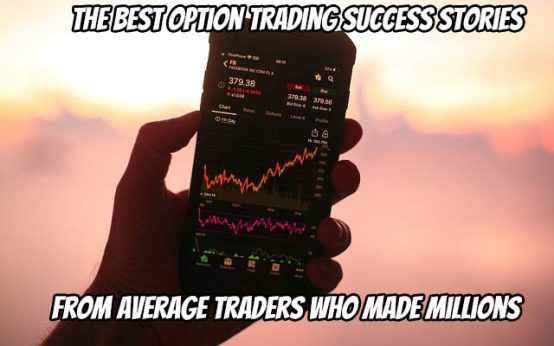 The Best Option Trading Success Stories from Average Traders Who Made Millions
The Best Option Trading Success Stories from Average Traders Who Made Millions 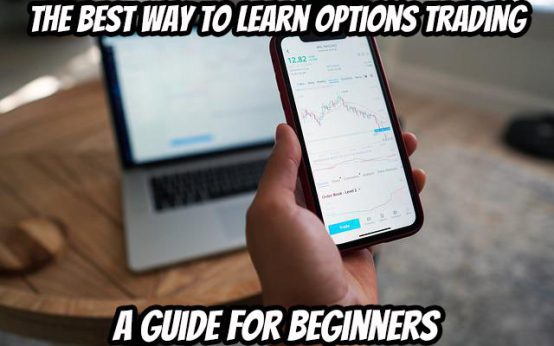 The Best Way to Learn Options Trading: A Guide for Beginners
The Best Way to Learn Options Trading: A Guide for Beginners 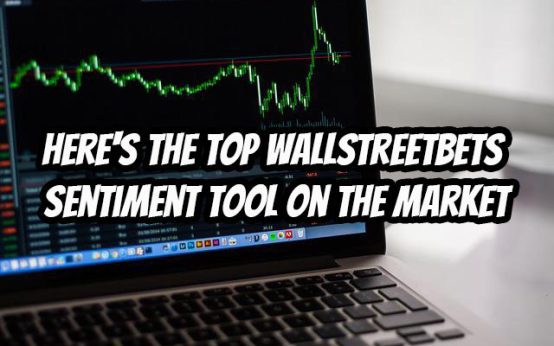 Here’s The Top WallStreetBets Sentiment Tool on The Market
Here’s The Top WallStreetBets Sentiment Tool on The Market 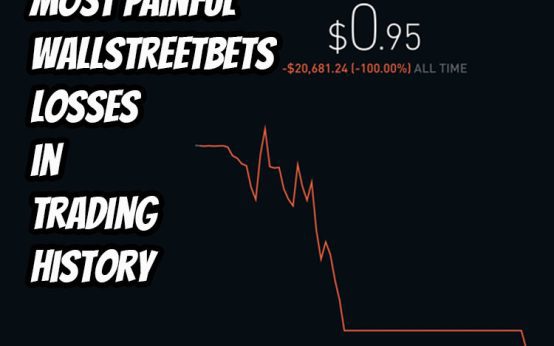 The Biggest and Most Painful WallStreetBets Losses in Trading History
The Biggest and Most Painful WallStreetBets Losses in Trading History